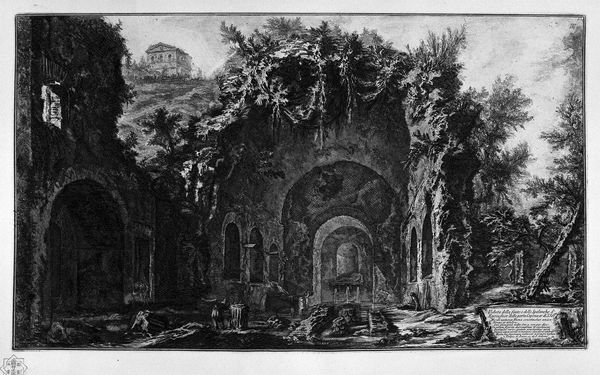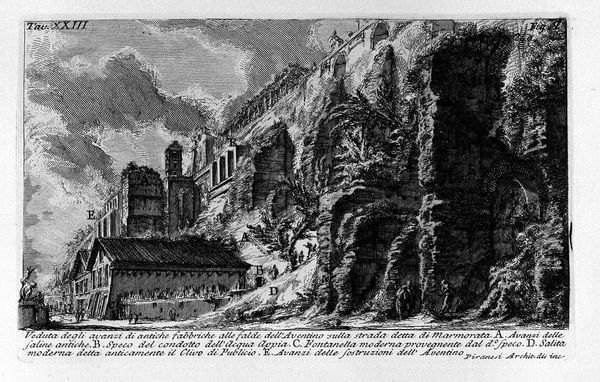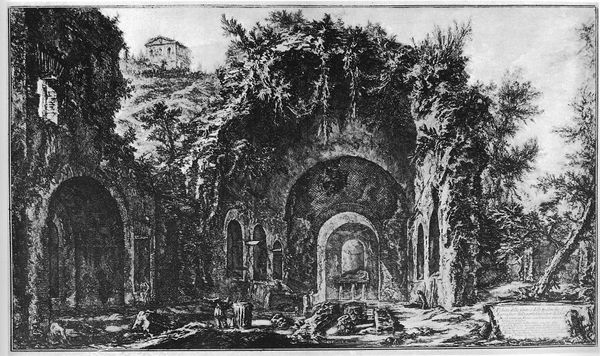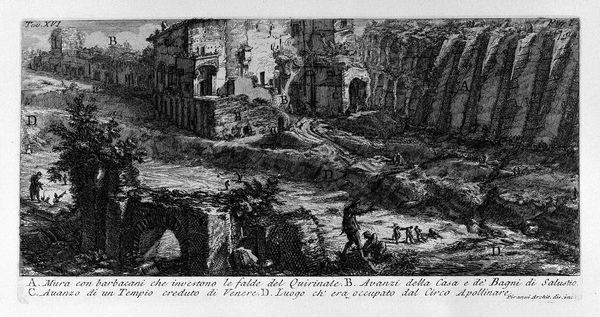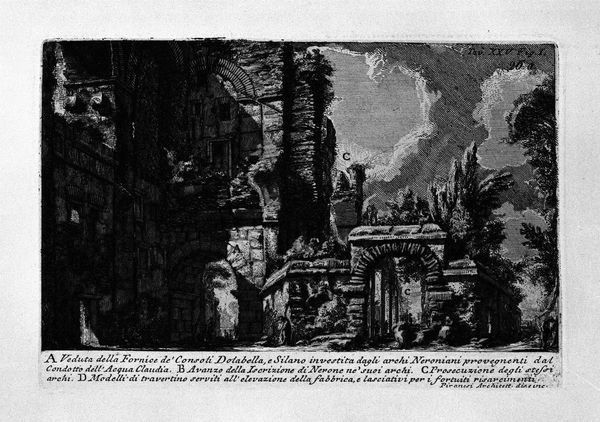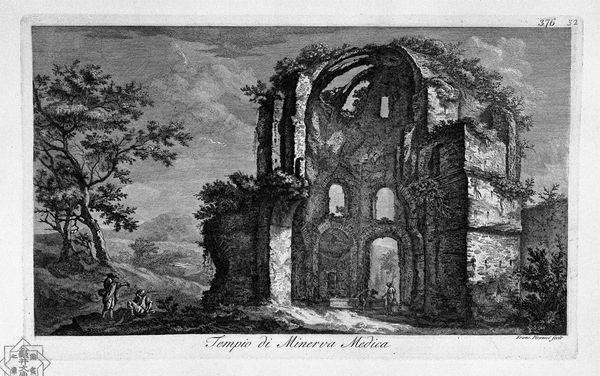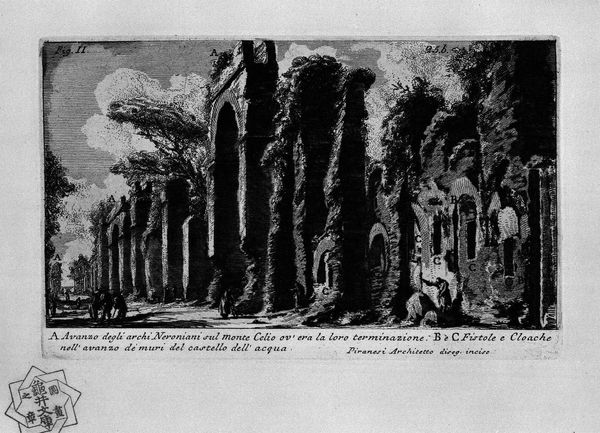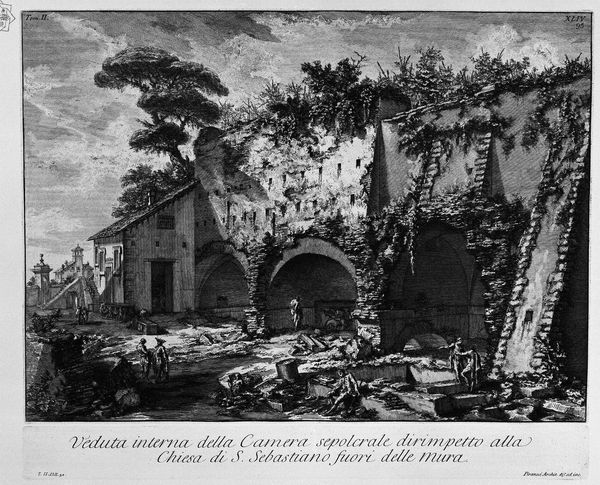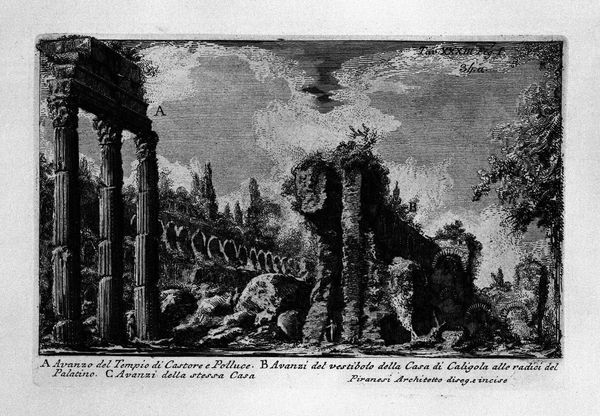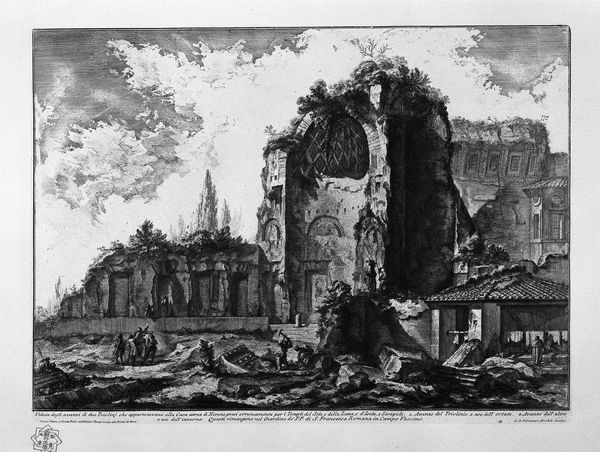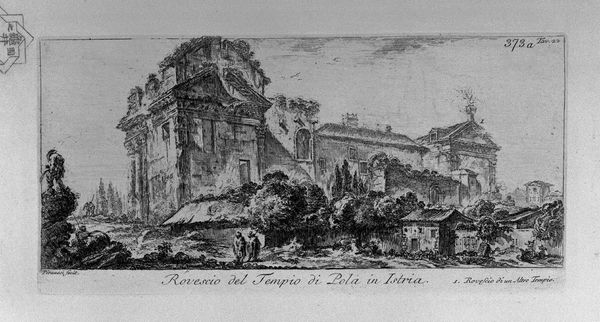
The Roman antiquities, t. 1, Plate XX. Portico of Marcus Aemilius Lepidus and P. Aemilius Paulus. 1756
0:00
0:00
print, etching, engraving, architecture
#
neoclacissism
# print
#
etching
#
carving
#
landscape
#
art
#
form
#
ancient-mediterranean
#
column
#
line
#
cityscape
#
engraving
#
architecture
#
realism
Copyright: Public domain
Curator: Looking at this print, I feel instantly transported! It’s like peering into a lost world, wouldn't you agree? Editor: I see what you mean, but what strikes me is the sheer process that brought it to life—all that detailed etching, all that inky labor transforming a vision of ancient Rome onto paper. It makes you consider the economics and human power behind art creation. Curator: Indeed, Piranesi was something of a master at that, wasn't he? This is from 1756, titled "The Roman Antiquities, t. 1, Plate XX. Portico of Marcus Aemilius Lepidus and P. Aemilius Paulus." You know, gazing upon it makes me wonder if the melancholic shadows hint at the inevitable passage of time. A wistful memento mori, perhaps? Editor: Maybe so, but consider how Piranesi positioned himself within that social hierarchy through craft. He wasn't just depicting Roman ruins; he was participating in an artistic market—engraving plates, selling prints, cultivating an audience who appreciated his vision of grandeur, ruin and all. It's a commodity rooted in antiquity! Curator: True! I like the realism he captured with such sensitivity, those crumbing facades overgrown with flora! In this play of line and form you can lose yourself. Doesn't this contrast enhance a profound sense of decay but simultaneously of an abiding form of natural immortality? Editor: I'd emphasize the sharp contrast he employs more—almost theatrical, I would argue. It served as his unique aesthetic brand and business. He created his artistic niche that tapped into cultural reverence for the Ancient Rome. But for whom and how are these ruins packaged through prints like these. Who really had access to the crumbling grandeur. Curator: You’ve definitely provided me with a novel lens for observation here. Editor: Exactly—a process view helps situate the human labor, social power and economy that all art creation relies upon, ruins or otherwise.
Comments
No comments
Be the first to comment and join the conversation on the ultimate creative platform.

